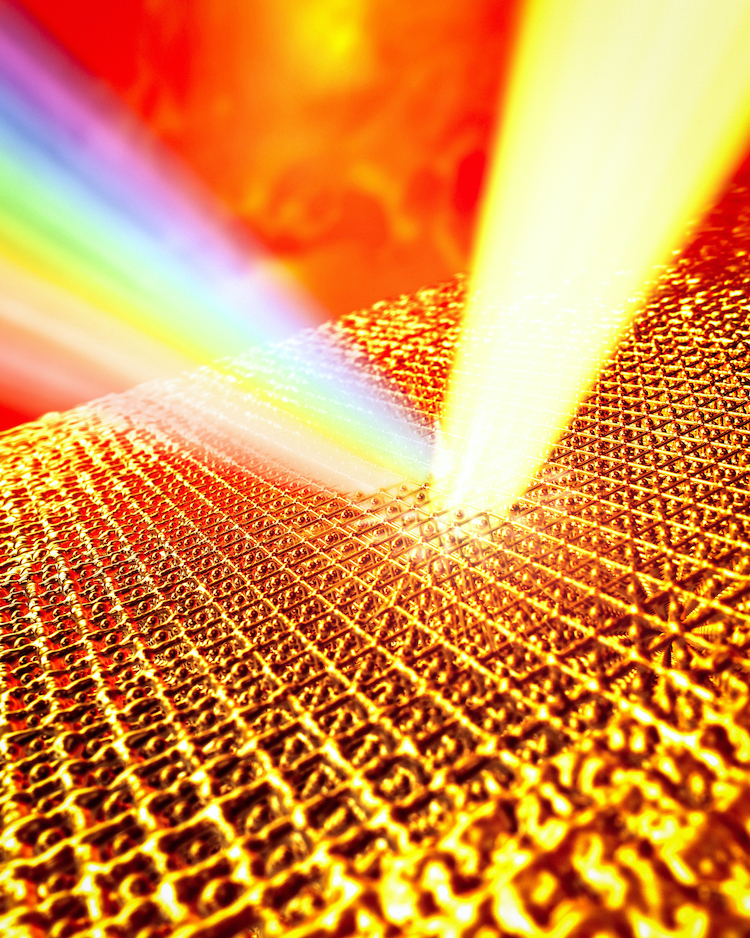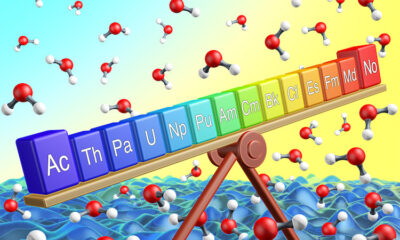Science
Scientists Unlock Secrets of Solid Materials at Extreme Temperatures

Researchers have significantly advanced our understanding of how solids behave at extreme temperatures, challenging long-standing assumptions about their melting points. A team led by Thomas White from the University of Nevada discovered that gold can remain solid at temperatures exceeding 14 times its melting point of 1064 °C. This groundbreaking finding, detailed in the journal Nature, suggests that the question of how hot a solid can get before it melts lacks a definitive answer.
Previously, scientists believed that solids could not exist above three times their melting temperatures due to a theoretical limit known as the “entropy catastrophe.” White’s team demonstrated that, by rapidly heating materials, it is possible to surpass this limit. “Until now, we thought that solids could not exist above about three times their melting temperatures,” White stated. “Our results show that if we heat a material rapidly, it is possible to bypass this limit entirely.”
To achieve these results, the researchers used intense laser pulses that lasted just 50 femtoseconds (1 fs = 10^-15 s) to heat a 50-nanometre-thick film of gold. The key innovation lies in the speed of heating, which allowed the gold lattice to remain intact while reaching incredibly high temperatures. “By depositing energy faster than the gold lattice could expand, we created a state in which the gold was incredibly hot, but still maintained its solid crystalline structure,” White explained.
Utilising the Linac Coherent Light Source (LCLS) at Stanford University, the team measured these extreme temperatures with unprecedented accuracy. Their method involved using an X-ray laser to observe the re-emission of photons by the gold atoms, which revealed the average kinetic energy of the atoms and thus their temperature. This approach eliminated the need for complex computer modelling, allowing for a direct measurement of atomic velocities.
The researchers, also comprising experts from the UK, Germany, and Italy, aimed to develop a straightforward, model-independent technique to measure atom temperatures in extreme conditions. The challenges they faced were significant. “We not only needed a high-resolution X-ray spectrometer capable of resolving energy features of just millielectronvolts (meV) but also an X-ray source bright enough to generate meaningful signals from small, short-lived samples,” White noted.
Traditionally, temperature measurements in extreme conditions have relied on indirect methods, often leading to considerable uncertainties. “In our experiments, these extreme states last just picoseconds or nanoseconds. We can’t exactly insert a thermometer,” White added. This limitation has hindered progress in fields such as plasma and materials physics.
The current work represents a major milestone, providing the first direct method for measuring ion temperatures in dense, strongly driven matter. This capability opens doors in various scientific domains, including planetary science, where researchers can now investigate conditions within giant planets, and fusion energy, where accurate temperature diagnostics are critical.
Looking ahead, the team plans to apply their method to shock-compressed materials. Recently, they conducted a six-night experiment at the LCLS to measure both particle velocity and temperature in shock-melted iron. “Not only are we tracking temperature in the solid phase, but now we’re accessing molten states under dynamic compression, akin to conditions found inside planetary interiors,” White explained.
As the researchers analyse their findings, they aim to extend this innovative approach to a broader range of materials and conditions. “Our goal is to allow for a new generation of precise, real-time diagnostics in extreme environments,” White said, underscoring the potential impact of this research on materials science and beyond.
-

 Entertainment3 months ago
Entertainment3 months agoAnn Ming Reflects on ITV’s ‘I Fought the Law’ Drama
-

 Entertainment4 months ago
Entertainment4 months agoKate Garraway Sells £2 Million Home Amid Financial Struggles
-

 Health3 months ago
Health3 months agoKatie Price Faces New Health Concerns After Cancer Symptoms Resurface
-

 Entertainment3 weeks ago
Entertainment3 weeks agoCoronation Street Fans React as Todd Faces Heartbreaking Choice
-

 Entertainment3 months ago
Entertainment3 months agoCoronation Street’s Carl Webster Faces Trouble with New Affairs
-

 World3 days ago
World3 days agoKevin Sinfield Exceeds Fundraising Goal Ahead of Final Marathons
-

 Entertainment3 days ago
Entertainment3 days agoTwo Stars Evicted from I’m A Celebrity Just Days Before Finale
-

 World3 weeks ago
World3 weeks agoBailey Announces Heartbreaking Split from Rebecca After Reunion
-

 Entertainment3 months ago
Entertainment3 months agoWhere is Tinder Swindler Simon Leviev? Latest Updates Revealed
-

 Entertainment4 months ago
Entertainment4 months agoMarkiplier Addresses AI Controversy During Livestream Response
-

 Science2 months ago
Science2 months agoBrian Cox Addresses Claims of Alien Probe in 3I/ATLAS Discovery
-

 Health5 months ago
Health5 months agoCarol Vorderman Reflects on Health Scare and Family Support



















